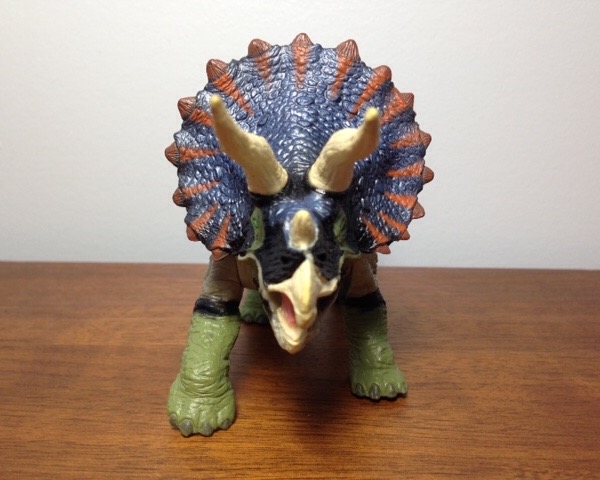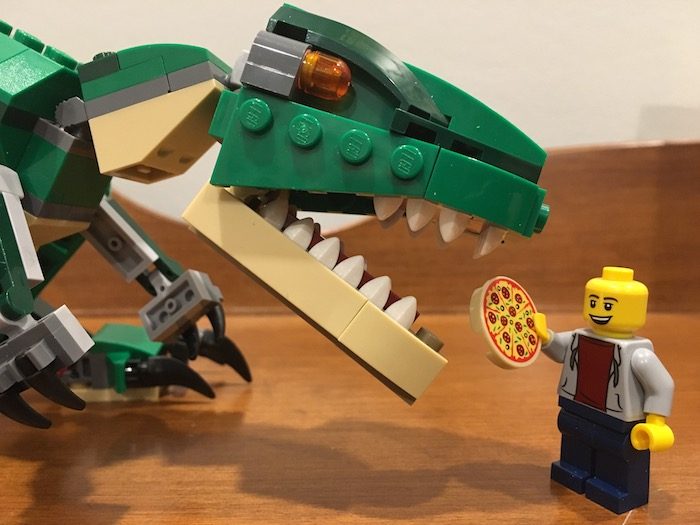Review: Triceratops (Jurassic Park 2009 by Hasbro)

2.3 (15 votes)
The dinosaur toy community received a big surprise in the summer of 2016 with the news that Universal had taken away the Jurassic Park license from Hasbro and given it to Mattel. Whether or not this is a boon or a bust remains to be seen, although I have difficulty envisioning anything worse than the embarrassing Jurassic World line.

 Suspsy has lived in Canada all his life. One day when he was in kindergarten, his teacher did a lesson on dinosaurs and put up some giant cutouts on the wall. Suspsy immediately began pretending to be a Tyrannosaurus rex at playtime, and continued to do so for many subsequent playtimes. Since then, he has acquired two degrees, worked many different jobs, travelled to many fantastic locations, fallen in love, gotten married, and settled down to raise a family, but his passion for dinosaurs and other prehistoric animals has never waned.
Suspsy has lived in Canada all his life. One day when he was in kindergarten, his teacher did a lesson on dinosaurs and put up some giant cutouts on the wall. Suspsy immediately began pretending to be a Tyrannosaurus rex at playtime, and continued to do so for many subsequent playtimes. Since then, he has acquired two degrees, worked many different jobs, travelled to many fantastic locations, fallen in love, gotten married, and settled down to raise a family, but his passion for dinosaurs and other prehistoric animals has never waned.












